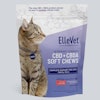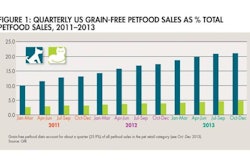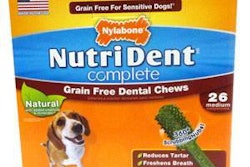
Despite their long and close association with humans, dogs remain closest genetically to the gray wolf, with whom they share over 99% of their mitochondrial DNA, according to the whitepaper, The Biologically Appropriate Food Concept and the Dietary Needs of Dogs and Cats, from Champion Pet Foods. Just like wolves, all dogs have evolved as carnivores, with anatomical features that clearly adapt them for meat-based diets. Dogs and cats are hunters. The structures of their teeth, jaws and digestive systems scientifically classify them as such, and some petfood companies are formulating diets that represent a new niche meant to mirror the types of foods cats and dogs would encounter in their natural, ancestral environment.
Biologically appropriate petfoods are often rich in protein or meat-first in their ingredient listings, and low in carbohydrates or simply grain-free. The Association of American Feed Control Officials' Pet Food Nutrient Profiles (2010) shows that dogs and cats do not require carbohydrates in their diets, and according to the National Research Council's Committee on Animal Nutrition (2006), "there appears to be no requirement for carbohydrates provided sufficient protein is given."
According to bio-appropriate dog food brand Acana, these five rules reflect biologically appropriate values:
- Meat concentrated formulas -Meat inclusions of 45% to 65% are at the same high levels of meat and meat protein that cats and dogs would encounter in nature.
- Diverse meat ingredients -A variety of fresh meats and fish provides the diversity of proteins and fats essential to the health of dogs and cats.
- Protein rich, moderate fat and carbohydrate limited -Conventional petfoods often have in excess of 50% carbohydrate content. Bio-appropriate petfoods limit carbohydrates to about half that of conventional foods, and often feature a single source of grain like steel-cut oats or quinoa.
- Whole fruits and vegetables -Vitamins and protective nutrients are provided through bio-available produce instead of high-glycemic grains like corn and rice.
- Fresh regional ingredients -Look for 'never frozen', 'preservative-free', 'local' and 'authentically fresh' on these petfood labels.
According to The Biologically Appropriate Food Concept, conventional dry dog and cat foods appear to be created on the premise that the digestive system of the dog and cat is similar to humans-with an emphasis on grains and carbohydrates. While some would argue that dogs and cats have adapted since kibble foods were introduced, bio-appropriate petfood makers would counter that their digestive systems remain unchanged. "Such evolutionary adaptations require much more time than a mere hundred years or so, and the evolutionary change-from gross anatomy down to the molecular level-that would be required for the development of such different digestive capabilities would take much longer than the time that dogs have been living with humans," the Champion Pet Foods whitepaper points out.
In the short digestive systems of dogs and cats, plant proteins are far less digestible than meat proteins. High levels of trypsin inhibitors grain legumes can cause substantial reductions in protein and amino acid digestibilities (up to 50%) in rats and pigs. Certain protein sources are better than others by providing a richer blend of amino acids. These proteins have a high Biological Value (BV). BV refers to how well the body can actually use the protein (see Table 1).
While it was once thought that too much protein could lead to health problems, studies have proven that protein does not cause orthopedic problems in puppies, nor lead to kidney disease in older dogs. High-protein diets support the immune system and the central nervous system, contribute to wound healing, help build lean muscle, and are required for skin and coat health, says The Biologically Appropriate Food Concept.
Emily Lagasse, founder and creator of FedWell, a bio-available lamb baked kibble that just launched in 2014, was always fascinated by nutrition and how fresh, high-quality, minimally processed foods can have such a dramatic and positive impact on human health. "I found my dog Fenway while I was living in Togo, West Africa, and when we came back to the states he got really ill on the traditional American dog food diet," Lagasse says, explaining her move into the niche petfood market. "I took classes on dog food, anatomy and nutrition and started cooking for him myself."
FedWell is made of table-grade produce, nutrient dense and anti-inflammatory ingredients and no synthetic additives, according to Lagasse. The dog food's ingredient list includes lamb, sweet potato, salmon, egg, flax, lamb liver, coconut oil, sprouted flaxseed, sprouted lentils, kelp, spinach, cranberry, carrot, apple, sprouted broccoli and squash.


.png?auto=format%2Ccompress&fit=crop&h=167&q=70&w=250)














